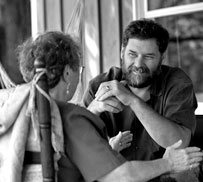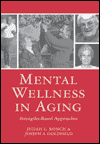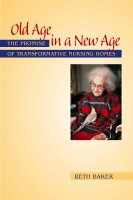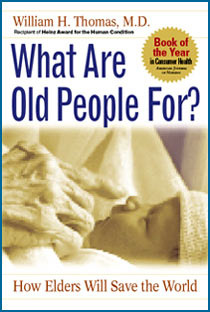![]()
Search
Recent Posts
- ChangingAging.org Redesign -- Please Bookmark!
- Disaster in Buffalo
- Power Up Friday
- Blanchard WinsDays
- Kevin Frick writes...
- Monkhouse Monday
- Getting Closer!
- Blanchard WinsDays
- Power Up Friday
- My Pick for Health and Human Services
- Understanding Health Care Reform
- Facts Are Stubborn Things: Social Security Edition
- Monkhouse Monday
- Localism is Coming
- Krugman Can't Wait...
Recent Comments
- Dorothea Johnson on
Changing Choices - charee on
Changing Choices - Bettie Farrar on
Changing Choices
Category Archives
- AGING 100
- Aging
- Culture
- Dementia
- Eden Alternative
- Erickson School
- Green House
- Health Policy
- Longevity
- Media
- Rockets
Monthly Archives
- February 2009
- January 2009
- December 2008
- November 2008
- October 2008
- September 2008
- August 2008
- July 2008
- June 2008
- May 2008
- April 2008
- March 2008
- February 2008
- January 2008
- December 2007
- November 2007
- October 2007
- September 2007
- August 2007
 Subscribe to this blog's feed
Subscribe to this blog's feed
Announcements

Blog Data
« CREEPY! | Main | Changing Aging in the Gem State »
September 18, 2008 |Permalink |Comments (3)
Changing Choices
Aging once offered few options to older adults choosing living arrangements. We've come a long way from the stark and difficult choice between home and impersonal institutional settings.
The expression aging in place has long been a rallying cry promoting independence among older adults. Studies show that 85% of elders aged 65 and older prefer to stay in their homes as they age. However, many people mistakenly believe institutional care to be their only residential alternative. Making a choice between toughing it out in their own homes or shuffling down a drab hallway to face fruit cups and mystery meat is an easy one.Yet growing old in one's home may not be the safest, most socially conducive, or cost-effective housing choice. An increasing number of developers and gerontologists recognize aging as part of a community as a compelling new way to help older adults remain independent and emotionally fulfilled.
"After World War II, the idea of aging in place became everything that being put into a nursing home was not," says William Thomas, MD, a professor at the University of Maryland Baltimore County Erickson School and the founder of The Eden Alternative, a nonprofit organization dedicated to deinstitutionalizing nursing homes. "We believed that it was the miracle solution to healthy aging, but living alone with no family nearby can be a really difficult thing to do even though conventional wisdom says it's what's best."
And More Chrunchy Goodness...
While communal housing for older adults is relatively new, intergenerational communities have been around since 1991, with about 5,000 people living in close to 85 cohousing units across the country. These neighborhoods are generally made up of about 40 households per community with older cohousing neighborhoods running a bit smaller.Janice Blanchard, former director of the Denver Office on Aging, believes that cohousing communities resonate for many baby boomers, given that many left their parental homes to live together, sometimes with a lover, often with friends, delaying marriage and childbearing for years.
"Living in community is not a radical idea. In fact, it is our natural state," Blanchard says. "Homo sapiens, like our ancestors before us, are a tribal, communal animal; it is unnatural as a species for humans to live alone."
Laura Beck lives in EcoVillage at Ithaca, a cohousing community located in the Finger Lakes region of upstate New York. As a program director for Eden at Home, part of William Thomas' nonprofit, Beck delivers educational seminars to improve quality of life for care partner teams. She has also written extensively on cohousing and aging in community.
"Cohousing is a model where people come together intentionally and go through a shared-intention living process. It's not a commune; people own their own homes," Beck says. "There is shared infrastructure including a common house within each neighborhood. Everybody owns a piece of it; it is an extension of our homes."
Beck describes a pedestrian environment in which cars are kept away from the center of the neighborhood that is "very intergenerational," with ages ranging from newborns to people in their mid-80s. Decisions that involve the shared infrastructure are made by consensus. "This is a great opportunity to see how the intergenerational dynamic plays out, watching children create relationships with elders that are not their own grandparents," she says. "They can learn from each other, and it happens organically every day."
Beck writes about the strong sense of ownership that residents develop through community building. Unlike developer-driven projects or NORCs, cohousing residents design a locality that reflects their needs. The process takes about two and a half to three years to complete and involves building relationships with neighbors long before the physical land exists. Developers may guide the planning process but the community's mission and character, according to Beck, are in the hands of the residents.
Excerpted from...
Changing Choices — Aging in Place in the 21st Century
By Athan G. Bezaitis, MA
Aging Well
Vol. 1 No. 3 P. 30
Comments ( 3)
Personally I am very interested in the Co-housing model. It creates community and collaboration that supports the whole.
I love this model. I've read about other cohousing communities that are 55+ but I think that the intergenerational model has so much more to offer. Seniors can benefit from the energy and innocence of the children and the children can grow from the wisdom and experiences of the seniors.
It sounds like the notion of "aging in place" came about as an opposition to the only model of long term care existing at that time (post-WWII).
However, not long thereafter, the concept of "aging in place" and the spirit behind it was quickly misconstrued by the nursing home industry which began providing continuum of care services as an alternative to the traditional LTC setting. The problem with these alternatives is that, just like the institutional model, they deprive older people of the opportunity to stay connected with the rest of society. I see this phenomenon as another example of using semantics as a "face lift" to the same old way of treating older adults - isolation, separation, and disconnect.
In this respect, I would hate to see the communal housing models being defined by the concept of "aging in place". This is because, at their very core, they are completely different from any past models. Communal housing is really not so much about the place that you happen to be experiencing your aging. Or at least not entirely. Rather, these models appear to offer a completely different paradigm of aging and its inherent "usefulness" to society. These communities are drawn together intentionally because they believe in the benefits of inter generational living. They are about universal human needs and desires - connection, interdependence, and wholeness.














